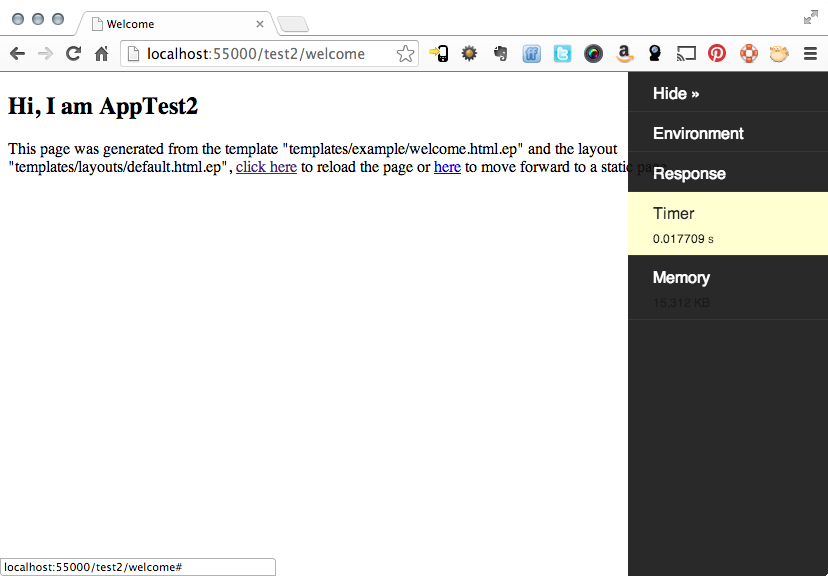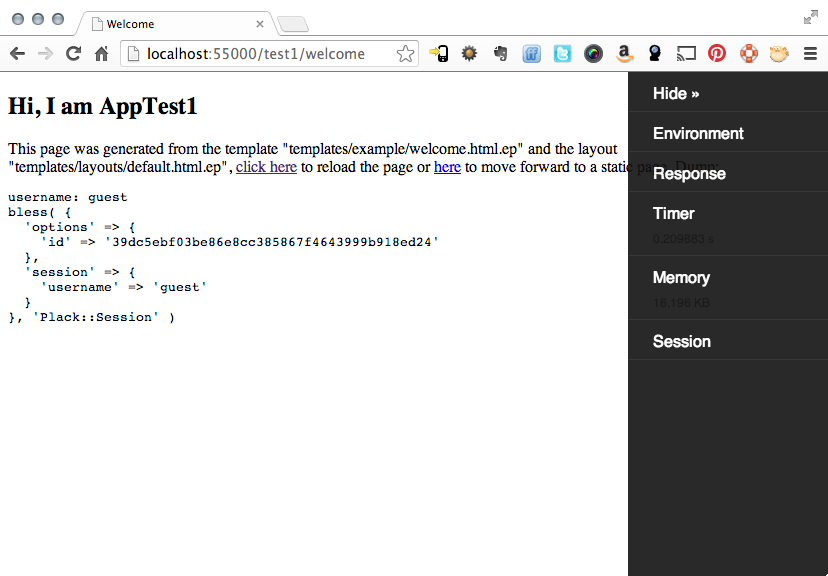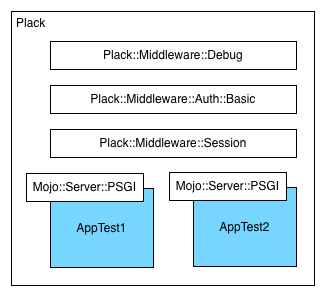Composing multiple Mojolicious apps with Plack
Multiple apps
originally published in March 2014
At work, we've built a number of internal web applications to perform various tasks: data entry, analytics, reporting, and so on.
While their functionalities are diverse and distinct, they tend to share portions of code larger than what I'd like. For example, the authentication code is repeated over and over across all the panels: of course we can factor out the parts that fetch user profiles from the database (and we do), but having distinct panels means we're bound to write the same logic into each of them.
This results in an unpleasant experience for final users as well: they have to login every time they want to use another applications for their daily job.
I'd rather like to have the authentication logic in a single point which then passes the control to the specific application the user asked to use.
Plack is a tool that can help in this situation and many others. One can compose different applications into a single one and also ''wrap'' them with procedures that are executed for every request, with no need to modify the inner, original application.
Basic usage
Let's say we already have two applications written with
Mojolicious: AppTest1 and AppTest2 (these are
the names of the sample apps you can find in the
github repo
related to this article). The Plack tool you need to compose them is
Plack::Builder.
Here's the code for composer.pl:
use Plack::Builder; use lib 'app_test1/lib'; use lib 'app_test2/lib'; use Mojo::Server::PSGI; use Data::Dumper; my $app1, $app2; { my $server = Mojo::Server::PSGI->new; $server->load_app('./app_test1/script/app_test1'); $app1 = sub { $server->run(@_) } } { my $server = Mojo::Server::PSGI->new; $server->load_app('./app_test2/script/app_test2'); $app2 = sub { $server->run(@_) } } builder { enable 'Debug'; mount "/test1" => builder { $app1 }; mount "/test2" => builder { $app2 }; };
I used two bare blocks to prepare, using the adaptor
Mojo::Server::PSGI,
the applications ($app1 and $app2) I later used with the composer:
builder.
I also added another middleware component,
Plack::Middleware::Debug,
to show the wrapping technique I was talking about before: in this case
Debug adds useful informations about the application execution. What
is important is that it does that without touching for the code of the
application.
Start the server with plackup composer.pl to see the results.

Managing authentication using middlewares
Now we can solve one the problems I mentioned in the introduction: we
can add an authentication layer that will be common to all the
applications composed as we've seen. Plack conveniently provides
middlewares to do so: to keep things simple we're going to use
Plack::Middleware::Auth::Basic.
Just drop these lines in the builder part of composer.pl:
enable "Auth::Basic", authenticator => sub { my($username, $password) = @_; return $username eq 'guest' && $password eq 'guest'; };
Of course you can write more complex logic for authenticating the user (in my case, for example, I would look in a user database).
Communicating with the applications
Authenticating the user is just one half of the task: once the user has entered the app, we must ensure he can access the resources he's interested in. We need to authorize him, and I believe this part must be in the applications, not in the Plack composer.
To do so we must face a problem. Authentication happened in a middleware, thus outside of the application itself: the application can then just assume someone else checked the identity of the user. But we need more specific information to decide whether we can serve or not a particular page. It's not enough to know that someone trusted has entered the application: we need to know as well who he is. Since only the middleware is aware of the user's identity, we need to find a way for middlewares and applications to talk to each other.
One way to accomplish that is using sessions. They not only provide a way to mantain state across requests, but also a mean for different layers of the system (namely Plack middlewares and Mojolicious apps) to communicate.
First, we drop a new line into our composer:
enable 'Session', store => Plack::Session::Store->new;
Then we modify a little bit the authenticator we already wrote:
enable "Auth::Basic", authenticator => sub { my($username, $password, $env) = @_; if ( $username eq 'guest' && $password eq 'guest' ) { $env->{'psgix.session'}->{'username'} = $username; return 1; } };
In the applications, to fetch the session data:
my $session = Plack::Session->new( $self->req->env ); my $username = $session->get('username');
Here the result.

Here a graphical representation of the architecture we obtained:
